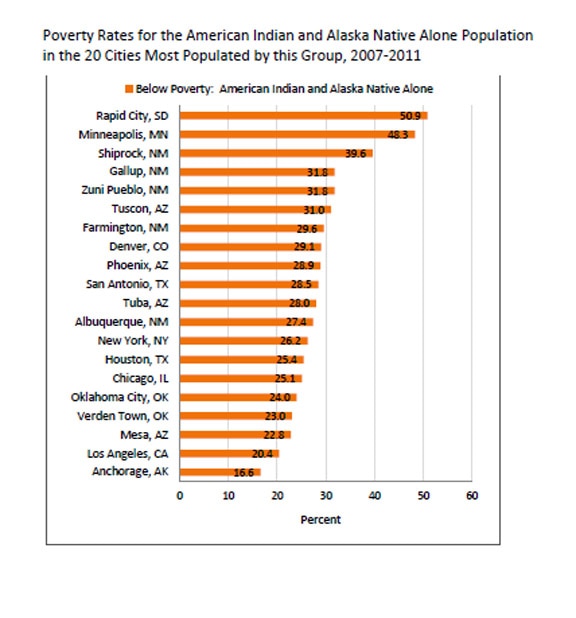High poverty rates aren't just to be found in ghettos, barrios or white slums. I've blogged before about food semi-deserts in some rural areas, especially those of lower incomes, like my county of current residence, with nearly 35 percent poverty.
But, that's low.
The real rural and small-town poverty in the US? Head to your nearest large Western-state Indian reservation, as the Census Bureau again confirms.
I can personally confirm this, although, at the time of first confirmation, my political mindset was nowhere near what it is now.
I grew up in Gallup, which you'll see is No. 4 on the list.
(I hope you also note that this is Indian poverty alone.)
I've been through Shiprock, which also borders the Big Rez, the main Navajo reservation, many a time. Ditto on Farmington, due east of Shiprock and where one of my brothers lives. The Zuni pueblo is due south of Gallup. Tuba City is on the west side of the Big Rez, just west of the Hopi lands.
The Sioux heartlands, represented by Rapid City and Sioux outmigration to Minneapolis (a lot of Navajos are in L.A., some in Denver) is the only Native American group that's probably equal or worse.
When I was growing up, my dad would complain about Navajos buying steak with food stamps while he bought hamburgers with cash. I don't know how true this is. I'm sure it was less true to far less true than he presented it.
I do know that Navajos, like many other American Indians, on average, seemed to have a huge sweet tooth. Which of course was followed by the ravages of diabetes. Perhaps not as bad as Pima or Tohono O'odham, but bad enough.
I also saw plenty, plenty of alcoholism there. Cheap sweet toaky wine was the poison of choice.
Also note that American Indian poverty rates rank worse than even African American rates.
It's true that American Indian population numbers are far less than blacks or Hispanics. It's still no reason to ignore rural and small town poverty, Indian above all, but ultimately of any background.

No comments:
Post a Comment